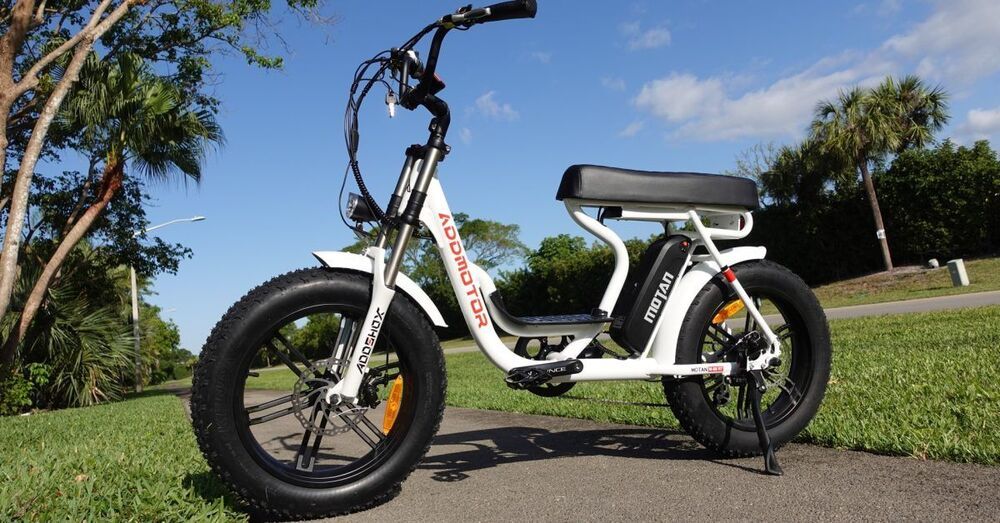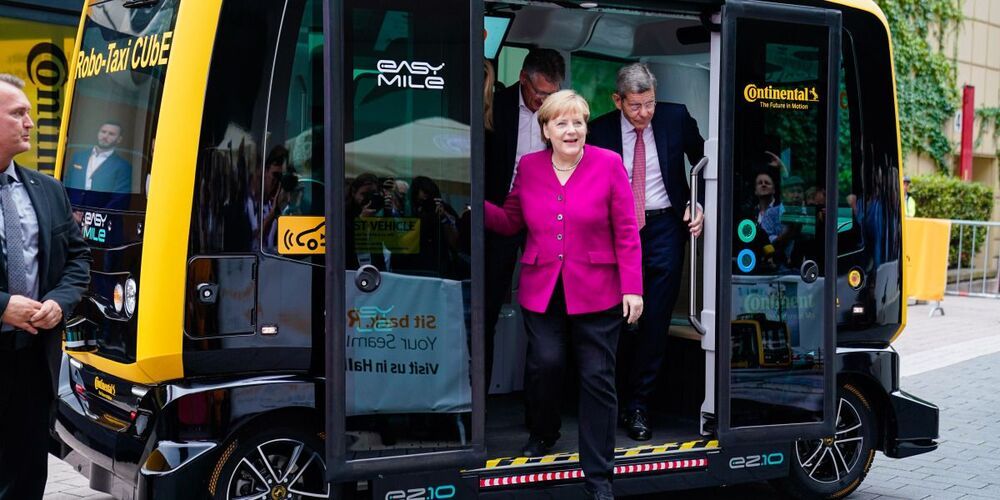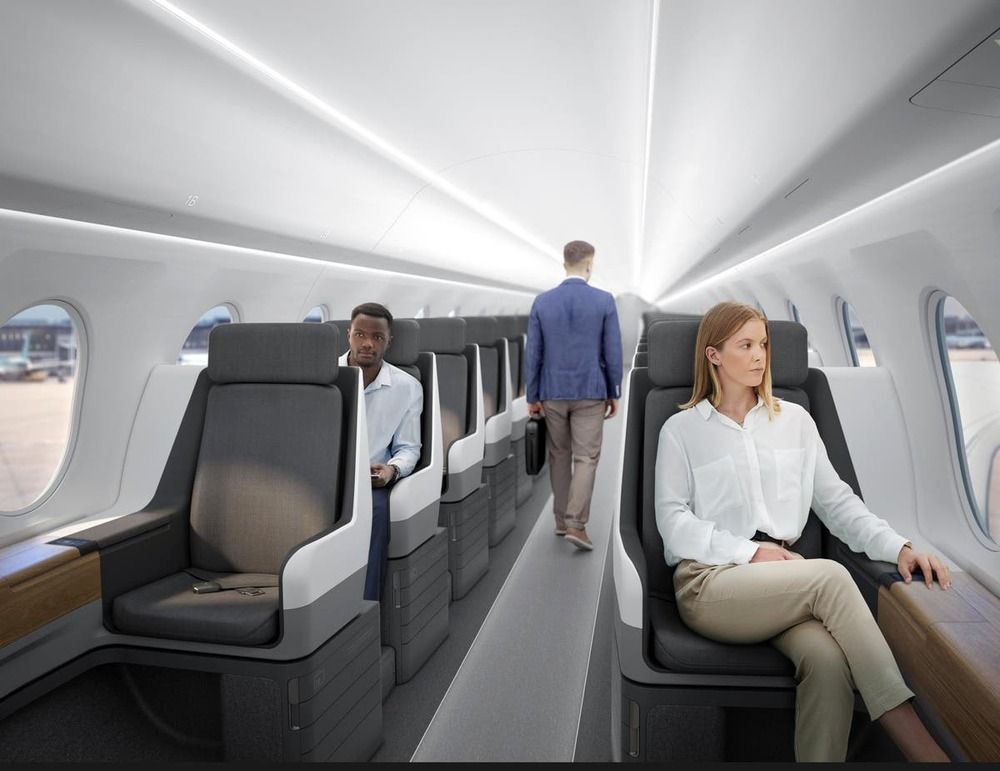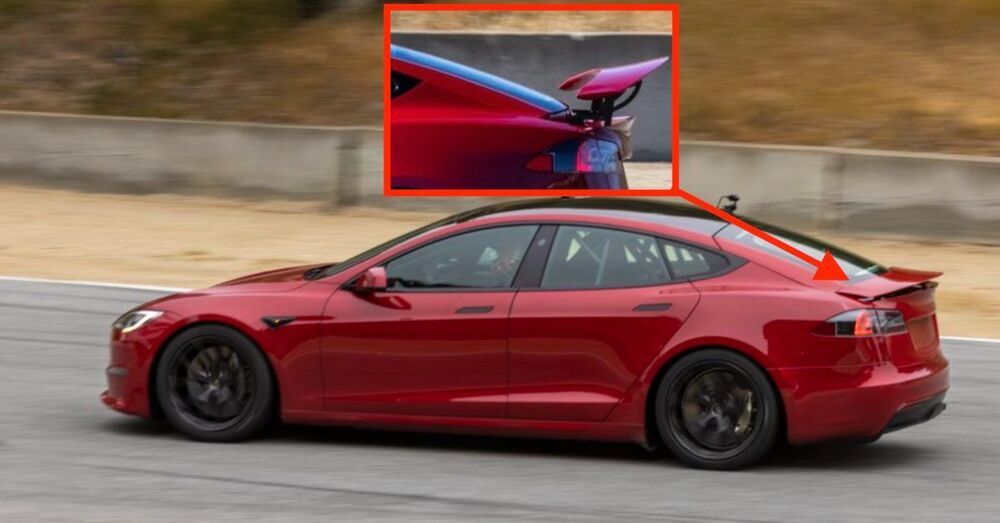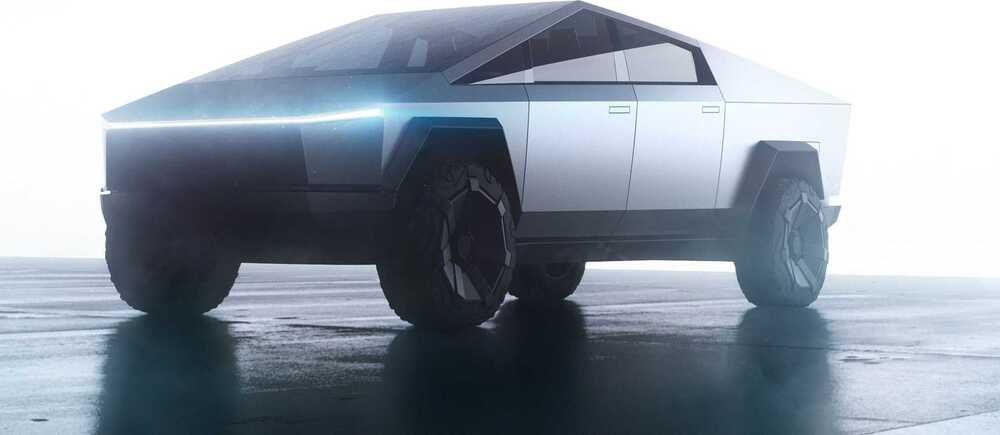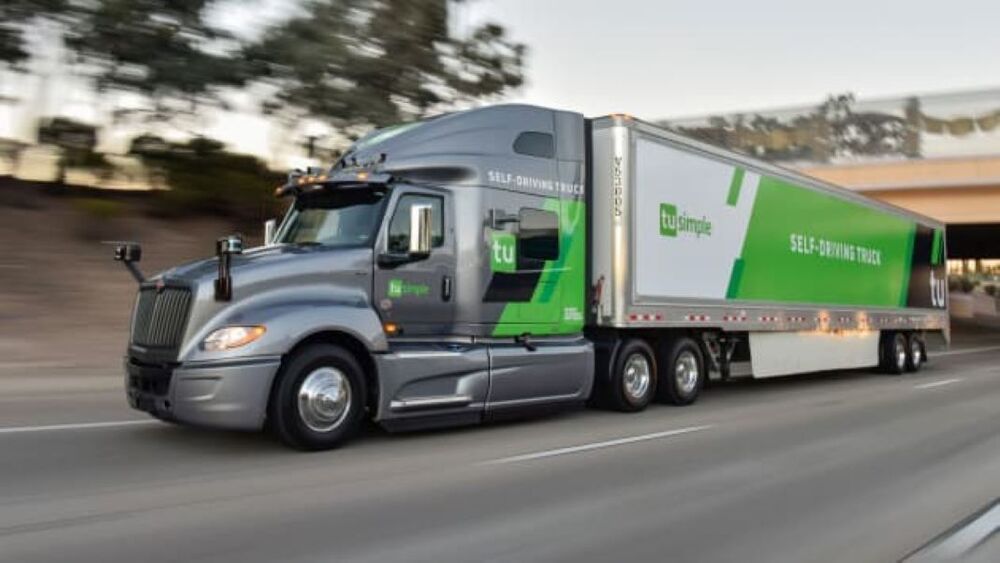Electric bicycles in the rugged moped style are all over the place these days, and for good reason. Unlike fitness e-bikes that are often used for a combination of exercise and leisure riding, electric mopeds are built mostly for good old fashioned getting around. And the Addmotor M-66 R7 moped fully embodies that design ethos. It’s a transportation e-bike that will have you zipping around your city faster than a car and cheaper than a public transport season ticket.
Category: transportation – Page 302
History in flight!
Posted in robotics/AI, transportation
During a recent #MQ25 T1 test asset flight, this unmanned aerial refueler for the @USNavy delivered fuel to an F/A-18 #SuperHornet — the first time an unmanned aircraft has ever refueled another aircraft.
It’s on track to be the first country to legalize fully autonomous “robotaxis,” beating out the United States and China.
Flying taxis, more technically known as electric vertical take-off and landing (eVTOL) vehicles, might actually — finally — become a feasible technology thanks to a new development in battery technology.
Ironically, the hardest part of designing and building eVTOLs isn’t the vehicle itself. Instead, it’s solving the challenging energy situation that eVTOLs face: Any battery that’s powerful enough to lift the thing is almost certainly too heavy and slow-charging to make a trip worthwhile. But a team of Pennsylvania State University engineers tested new batteries that can both recharge in a matter of minutes and survive thousands of charge cycles, according to research published Monday in the journal Joule, making eVTOLs seem a whole lot more realistic.
The energy-dense lithium-ion batteries represent a major leap forward in electric vehicle energy tech, according to The Independent. Both could be charged for a 50-mile journal in under ten minutes, making eVTOLs far more economically viable because each vehicle could take more trips per day.
“The world’s first purchase agreement for net-zero carbon supersonic aircraft marks a significant step toward our mission to create a more accessible world,” said Boom CEO Blake Scholl in a statement.
The planes, which will fly twice the speed of current passenger jets, are expected to be rolled out in 2025, take flight in 2026, and start carrying passengers in 2029.
Since Denver-based Boom was founded in 2014 it has raised $270m in capital and now has 150 employees.
Family sedan breaks speed record.
The new Tesla Model S Plaid has reportedly achieved a new quarter-mile world record with a 9.2-second run, according to Jay Leno, who was at the racetrack for the record attempt.
After several months of delays, Tesla is apparently finally going to start deliveries of the new and updated Model S next week, including the new top performance Plaid version.
The automaker announced some impressive specs with 390 miles of range, 200 mph top speed, and 1.99 second 0–60 mph acceleration.
The patent describes the complexity of the layers of this so-called bulletproof glass.
Franz von Holzhausen throwing a steel ball at the Tesla Cybertruck’s side window and breaking it, despite the fact that it was supposed to deflect it, went viral for all the wrong reasons. However, even though the window failed the ball test, Tesla will still install laminated armored glass on its truck and thanks to newly released patents, we now know more about how this multi-layered glass works.
The patent states that it should be able to withstand a 2 Joule impact, with only a 10 percent chance of failure (that means it has an IK07 impact protection rating). This means it should be not fail when a 0.5 kg (1.1 pound) mass is dropped on it from 40 centimeters (15.8 inches) nine times out of ten.
Circa 2016
From driverless buses to an AI council worker called Amelia, municipal services are becoming increasingly automated. But what does that mean for the future of our cities – and the jobs market?
Self-driving cars are taking longer to come to market than many expected. In fact, it’s looking like they may be outpaced by pilotless planes and driverless trucks. A truck isn’t much different than a car, but self-driving technology is already coming in handy on long-haul trucking routes, as a recent cross-country trip showed.
Last month TuSimple, a transportation company focused on self-driving technology for heavy-duty trucks, shipped a truckload of watermelons from Arizona to Oklahoma using the truck’s autonomous system for over 80 percent of the journey. The starting point was Nogales, at Arizon’s southern end right on the border with Mexico. A human driver took the wheel for the first 60 miles or so, from Nogales to Tucson—but from there the truck went on auto-pilot, and not just for a little while. It drove itself all the way to Dallas, 950 miles to the east (there was a human safety driver on board the whole time, but not controlling the truck).
If you look at the most direct route, it’s pretty straightforward: there’s one fork where I-10 splits off and merges with I-20, but other than that, it’s straight on through ‘til morning. Literally, in this case; the truck drove the route in 14 hours and 6 minutes, as compared to the given estimate of the average time it takes a human to drive the same route—24 hours and 6 minutes.
The adoption of Android Auto is on the rise, with more and more carmakers bringing it to their new models, but at the same time, there’s also a shift in terms of supported versions.
